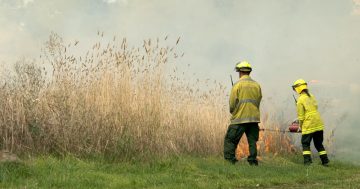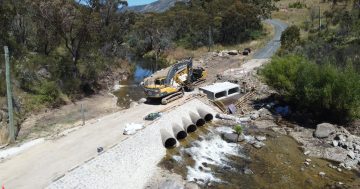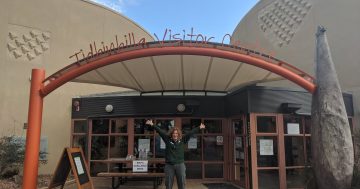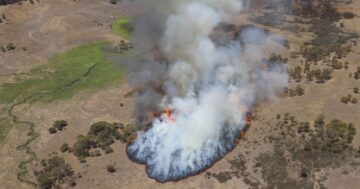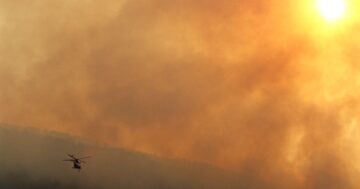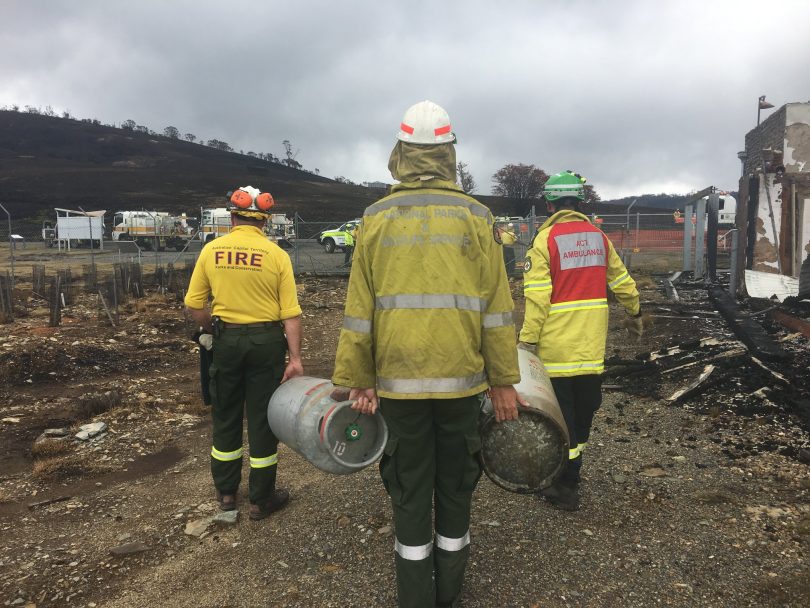
Members of the ACT Parks and Conservation fire unit at work during the Orroral Valley fire. Photo: ACT Parks and Conservation.
Last week, a section of 120-hectares of land was burned at Pierces Creek near the lower Cotter catchment west of Canberra.
The burn at Pierces Creek will reduce large piles of felled pine and forest debris from areas that have been cleared due to a bushfire that started in November 2018 when a stolen car was dumped and set alight there. Native plants and pines are scheduled to be planted in the area in the coming months.
The prescribed burn will be completed during the next couple of weeks and Canberrans may notice some smoke from the fire. An alert was issued by ACT Parks and Conservation which is managing an extensive and ongoing bushfire fuel management program to reduce fuel loads.
Many parts of the ACT, including rural and urban areas, have been burned while a cool window of opportunity is wide open. The prescribed burns are being managed by ACT Parks and Conservation, which has considered the concerns people may have following the Orroral Valley fire, the COVID-19 pandemic and the need to continue to manage land for the bushfire season ahead.
The person in charge of the planning and safety of what is known as the BOP (Bushfire Operations Plan) is ACT Parks and Conservation Fire Operations Manager, Scott Farquhar, who shared with Region Media the insights into managing about 187,000 hectares of land across the ACT and the Googong Foreshore.
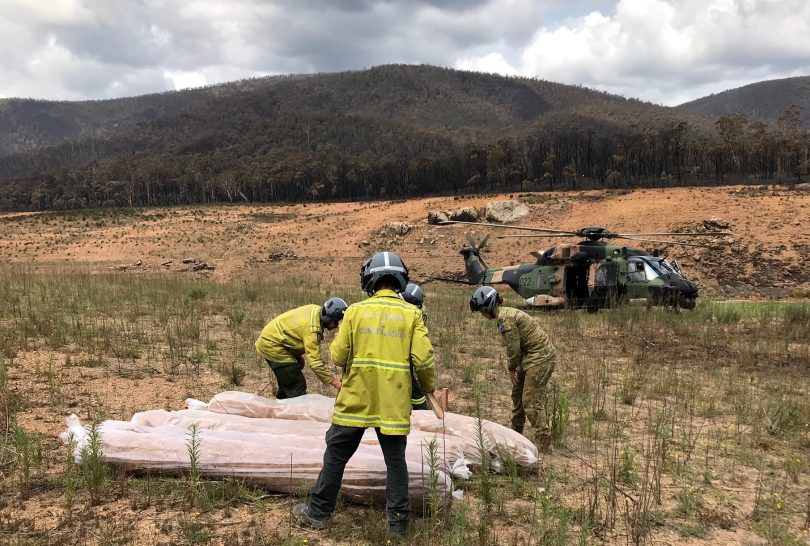
The ACT Parks and Conservation at work during the Orroral Valley fire. Photo: ACT Parks and Conservation.
He said the BOP is the annual plan that dovetails into a 10-year strategy document called the Strategic Bushfire Management Plan which is developed by the ACT Emergency Services Agency and is reviewed every five years. The plan had a significant amendment when the Orroral Valley fire eventually destroyed 86,562 hectares and about 80 per cent of the Namadgi National Park.
However, there are still significant areas that need to be managed, but Scott said no amount of prescribed burning can guarantee there won’t be more bushfires.
“The fuel management that we do works on 99 per cent of the days, but it’s those one per cent of days that cause 99 per cent of the damage,” Scott said.
“The conditions [during the Orroral Valley fire] were such that it would have been incredibly difficult to manage as it was just so dry.”
In the post-mortems that have occurred since the Orroral Valley fire, ACT Parks and Conservation fire managers found that the severity of the fire was slowed in areas where prescribed burns took place.
“What we had over summer was the massive availability of fuel as opposed to massive amounts of fuel. Because it was so dry, every log, twig and branch was available for a fire, but we’ve definitely seen evidence that the fire slowed in areas we had done prescribed burns,” Scott said.
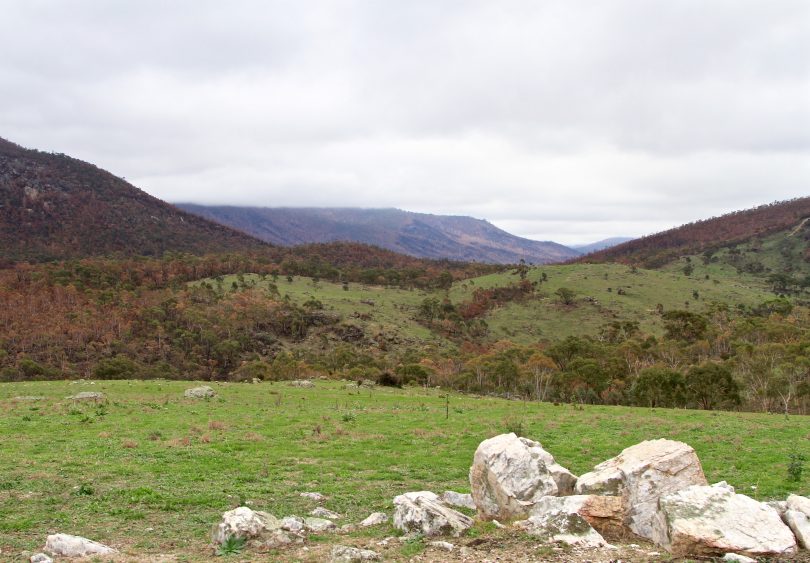
The Orroral Valley in March 2020, near where the fire began on 27 January. Photo: Michael Weaver.
Following good rainfall this year, the Orroral Valley is now as green as it could possibly be, but the green tinge is only hiding what is still dry underfoot.
Manager of the ACT Parks and Conservation Service Justin Foley also said there is more to their ongoing bushfire fuel management program than targets and prescribed burns.
“Prescribed burning is only one tool used to reduce the risk to life and property from fire,” Justin said.
“Other activities include slashing, grazing, physical removal, chemical treatment of vegetation, routine road maintenance, vegetation management, upgrading and construction of fire trails.”
He said while the changing climate is affecting when the fuel management program can occur, the window of opportunity is wide open at present. The majority of prescribed burns take place in autumn and conclude before the start of bushfire season. A few burns also occur in spring and winter if conditions are suitable.
“The Parks and Conservation Service has a detailed set of conditions in which a burn can occur and will not undertake prescribed burns if satisfactory conditions are not present. A detailed risk assessment is undertaken prior to ignition on every burn to ensure the current conditions meet the requirements as previously established,” Justin said.
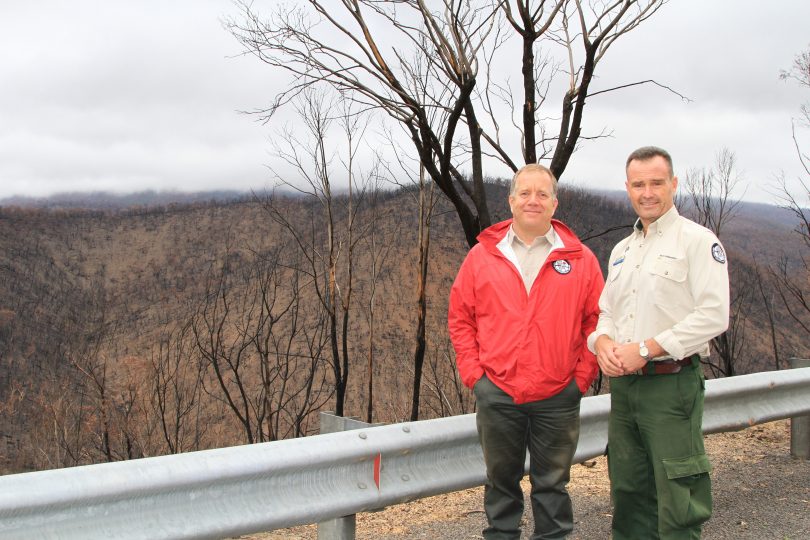
Justin Foley and Brett McNamara of ACT Parks and Conservation after the Orroral Valley fire burnt through the Namadgi National Park. Photo: Michael Weaver.
Scott Farquhar said their fire management unit is one of the most experienced in the country, with many members having been on international and domestic deployments, but he emphasised that fuel management is everyone’s responsibility. His team also works with rural landowners, the ACT Rural Fire Service and also their counterparts in NSW.
“While there is always going to be a residual risk, all we can do is minimise the risk. In the worst seasons, like we’ve just had, you can do all the fuel management in the world, but if you get an ignition in the wrong place, you’re going to have a running fire,” Scott said.
There are more than 150 fully trained and experienced forest fire managers who implement the prescribed burning program across the ACT, including a full-time Indigenous fire management officer who looks at every burn to consider cultural values and opportunities to deliver the low and slow cultural burns.
There are also significant areas of the ACT, between the Tidbinbilla Nature Reserve to the Brindabella National Park, that will require fuel management in the months ahead, and Scott can only reassure the community that his team is doing everything it can.
“We’ve got a really experienced fire management unit and we’ve been together for a long time, and we have some of the best people in the country who sit on national boards and have national and international experience. We’re always trying to improve the skillset of our unit and I think you see that in the results,” Scott said.
You can view the ACT’s Bushire Operations Plan on the ACT Government website.












